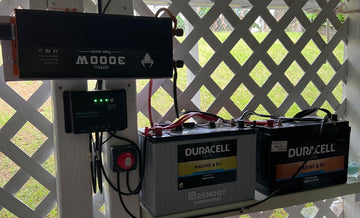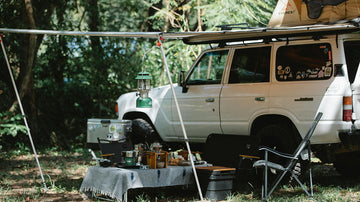Most people live in tiny houses to save money and reduce their environmental impact, which is one of the main reasons why homeowners choose solar energy.
Off-grid solar systems provide independent power solutions for tiny homes, allowing residents to become self-sufficient away from the traditional power grid. By using solar energy, residents can help the environment by reducing their dependence on fossil fuels, cutting energy costs, and reducing greenhouse gas emissions.
Solar energy is therefore particularly well suited to powering tiny homes compared to other energy sources. Installing a solar energy system is an ideal option for tiny homeowners who want to save money, reduce their environmental impact, and achieve energy independence. This use of clean energy is not only in line with the values of tiny homeowners but also helps to create a greener and more sustainable lifestyle. Here is a guide to help you through the process:
Solar energy calculations for tiny houses
The size of your solar system depends on how much electricity you need or plan to use each month. Many people mistakenly believe that the smaller the house, the less electricity they will need, which is not the case. If you have not yet moved into a tiny house, but you know what appliances you use and when you use them. You can do the calculations below:
Find the power consumption:
List all the appliances in your tiny home that use electricity and see how much power they use. Power is usually measured in watts (W) and is sometimes referred to as 'power rating' or 'power consumption'. Let's say your washing machine uses 500 W.
Determine the hours of use:
Assume the washing machine runs for one hour a day.
Calculate the watt hours:
Multiply the power consumption (in watts) by the number of operating hours. This will give you the amount of energy (in watt-hours) your washing machine uses in a day. Use the previous example:
Watt-hours = power consumption (W) × operating hours (h)
Watt-hours = 500W × 1 hour = 500 Wh per day = 0.5KWh
This gives a daily consumption of 0.5 kWh for this refrigerator.
Doing this calculation for all the appliances you intend to use will give you a rough idea of how much energy you will need daily. If you are still at the stage of choosing appliances for your tiny home, consider choosing smaller appliances or ones that are specifically designed to be efficient. Here's a table showing the energy consumption of common appliances.
Appliance Consumption Table (01)

(02)

(03)

Solar panel size for tiny house
The size of solar panels you need will depend on your energy consumption, the amount of sunlight in your area, and the location of the installation. If you install them on your roof, make sure you choose the right size and that the panels are positioned to receive as much sunlight as possible throughout the day.
Ground mount
Statistics show that ground-mounted systems are a popular option for smaller homes. Tiny houses often have small roofs, limiting the number of solar panels installed on the roof. With a ground-mounted system, you can install as many solar panels as you need to meet higher energy demands.
Secondly, mounting the solar system on the ground reduces the load on the roof and extends its life.
Mounting solar panels on the ground makes aligning and tiling them easier for optimum solar absorption efficiency. They are also more accessible if you need to remove snow or debris.
Roof mounting
A small percentage of tiny homeowners choose roof mounting, and it makes more sense to choose this option if the following conditions are met:
- People with very low solar energy needs, as only two or three solar panels can be installed on the roof of a tiny house. This option may be right for you if you are using solar power to supplement other sources of electricity, or if you only plan to use enough electricity to keep the lights on.
- In residential areas where there is no space for ground-mounted systems, they are often connected to the local grid. Many tiny homes have enough space for a ground-mounted system and no connection to the local grid.
- Smaller homes with roof structures that can support the weight of the solar system and are easy to install may be more economical and suitable for rooftop installation.
Let's say you need an average of 2 kWh per day to power your tiny house and you want a productivity rate of 1.5. Multiply 2 kWh by 1.5 to arrive at a target of 3 kWh, which is the ideal amount of energy you want to produce in a day.
Suppose the solar panels have a power of 300 watts. If the peak hours of sunlight are 4 hours per day, the solar panels will produce 1.2 kWh of electricity per day. Divide the target kWh (3) by the expected number of watt-hours (1.2) to find the number of solar panels:
3 kWh / 1.2 kWh/day = 2.5 solar panels required
For a tiny house that uses about 3 kWh of electricity per day, you need to install a total of three 300-watt solar panels!
Check out our article 'How to Design a Solar System’ for calculations on solar systems.
Solar panel kits for tiny house
The 100A MPPT controller is rated at 1,320W with a possible peak power of 5,280W. Twelve 100W solar panels with an energy conversion efficiency of 22%. Supplied with the necessary cables, mounting brackets, and connectors, the system components are well-designed and the installation process is quick and easy.
The lifespan of the solar kit is up to 15-25 years, depending on the environment and maintenance. In addition, we provide long-term after-sales service and technical support to ensure that the system operates stably.
More off-grid solar kits for sheds and cabins
Steps to install off-grid solar in a cabin:
It is not difficult to build your off-grid tiny house, after purchasing and installing your system, all that's left to do is enjoy your new sustainable lifestyle!


















